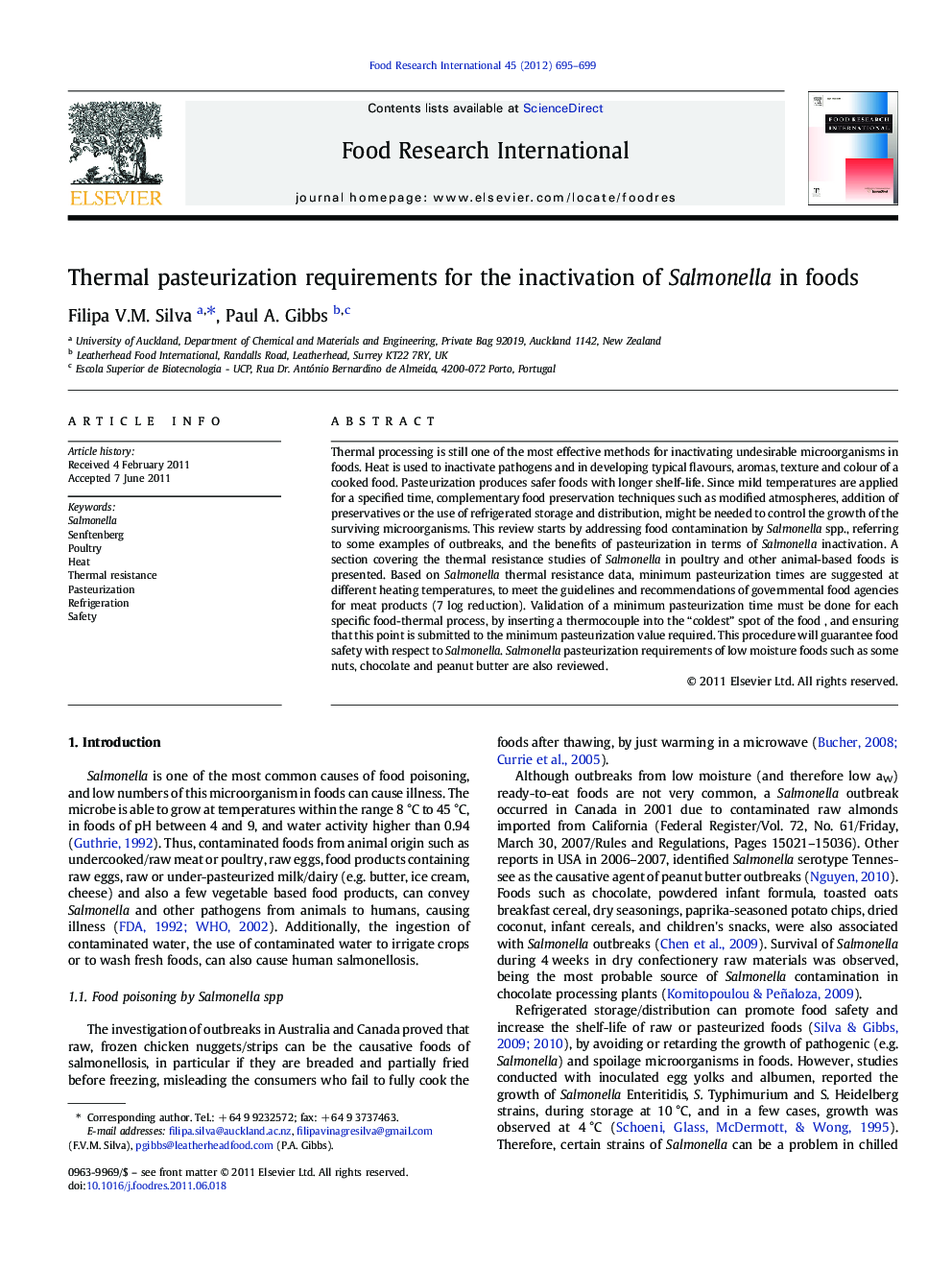| Article ID | Journal | Published Year | Pages | File Type |
|---|---|---|---|---|
| 4561718 | Food Research International | 2012 | 5 Pages |
Thermal processing is still one of the most effective methods for inactivating undesirable microorganisms in foods. Heat is used to inactivate pathogens and in developing typical flavours, aromas, texture and colour of a cooked food. Pasteurization produces safer foods with longer shelf-life. Since mild temperatures are applied for a specified time, complementary food preservation techniques such as modified atmospheres, addition of preservatives or the use of refrigerated storage and distribution, might be needed to control the growth of the surviving microorganisms. This review starts by addressing food contamination by Salmonella spp., referring to some examples of outbreaks, and the benefits of pasteurization in terms of Salmonella inactivation. A section covering the thermal resistance studies of Salmonella in poultry and other animal-based foods is presented. Based on Salmonella thermal resistance data, minimum pasteurization times are suggested at different heating temperatures, to meet the guidelines and recommendations of governmental food agencies for meat products (7 log reduction). Validation of a minimum pasteurization time must be done for each specific food-thermal process, by inserting a thermocouple into the “coldest” spot of the food , and ensuring that this point is submitted to the minimum pasteurization value required. This procedure will guarantee food safety with respect to Salmonella. Salmonella pasteurization requirements of low moisture foods such as some nuts, chocolate and peanut butter are also reviewed.
► Salmonella species cause both widespread and local outbreaks of food poisoning. ► Foods of animal origin are generally involved but also some fruits and vegetables. ► Pasteurisation effectively eliminates Salmonella; examples of processes are tabled. ► Equations for calculation of D- and z-values are given. ► In foods of low water activity, Salmonella heat resistance is markedly greater.
